As an educator, you know that building a quality learning experience goes beyond choosing a Math textbook, planning course topics and delivering them to your students. You also understand that each student enters your class with varying levels of preparation, confidence and motivation. So how can you best design your course to address all of the individual needs of your students throughout the entire semester?
Cue, WebAssign.
Keep reading to learn how you can use WebAssign to take your Math course content to the next level and drive student success.
1. Address Readiness Gaps
Helping your students learn often goes beyond your syllabus and course material. You need to make sure they possess the mindset and prerequisite skills in order to be successful in your course. Evaluating, identifying and addressing readiness gaps can be time-consuming, without a little help.
Help Students Assess and Practice Math Skills
Do you have a lot to cover this semester? Give students an opportunity to participate in a free College Math or Calculus Readiness Boot Camp. Students can self-enroll in the boot camp, or you can add it to your existing WebAssign course. In the boot camps, students complete exercises assessing their prerequisite knowledge and are provided with a complete tutorial and practice items to help them fill in any knowledge gaps.
Build Effective Learners with Soft Skills
Do your students know how to take effective notes, develop a growth mindset or navigate a Math textbook? It may seem simple, but these skills are essential to students’ success in a Math course. Within WebAssign, you can easily incorporate Math Mindset and College Success activities into your course to give students reflective assignments to nurture these skills.
Address Prerequisite Skills When Students Need Them
Most learners need exposure to prerequisite skills and concepts multiple times throughout the course to master the material. A great way to reinforce prerequisite skills is to present them in a just-in-time fashion, so they can understand the topics right before they need to apply them to a new concept.
WebAssign makes this even easier with a variety of question types like just-in-time exercises, quick-prep modules and Algebra remediation exercises you can incorporate in your assignments to provide valuable remediation throughout the course.
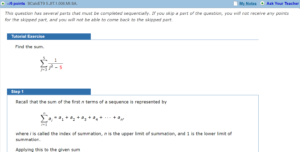
2. Improve Student Engagement
Keeping students on task and motivated to learn isn’t easy. Taking a student-first approach when you’re pulling together your course materials and assignments will ensure they’ll get your students’ attention—and time. Motivate your students to learn by elevating your course materials with visual aids and a few interactive question types, made easier by using the content and features available in WebAssign.
Get Students’ Attention with Videos
How hard is it for you to get students to complete their assigned reading? Instead, optimize your course materials for student engagement by adding video to your assignments. With WebAssign you have several options to consider:
- Create and upload your own videos for the deepest level of personalization
- Utilize the textbook resources and lecture videos within WebAssign to save time
- Assign pre-created assessment content like Video Example questions to your students
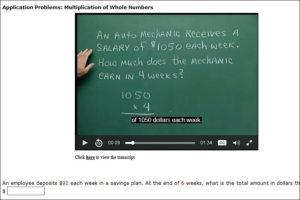
Personalize Your Course Materials for Your Students
Students are more likely to pay attention to your material if it’s relevant to them. Seem hard? By assigning Responsive Questions in WebAssign, students can input their own values, which will be used in the problem to bring their real-world experience to life. Similarly, customizing your questions allows you to change up specific parts of the problems to include more relevant substitutions.
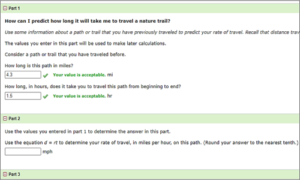
3. Build Problem-Solving Skills
Any student can guess an answer, but as an instructor, you want to make sure they truly understand the problem-solving steps it takes to get to the solution. Problem-solving skills are even more challenging to evaluate in an online environment, but luckily the content within WebAssign can do it for you.
Choose Questions that Make Students Do the Work
Assign tutorial questions such as Master It Standalone questions or Expanded Problems, which ask students to enter each problem-solving step to get to the right solution. This prevents students from cutting corners and increases their understanding of the correct process. As an added resource, you can enable learning tools like Master Its that provide students with optional tutorials at the question-level so they can independently work through a similar version of the problem step by step.
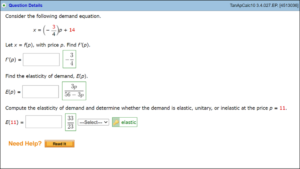
Check Students’ Work
When reviewing online homework submissions, it can be challenging to understand how students arrived at their answer. Get the chance to evaluate your students’ work by applying the Show My Work feature to specific questions or assignments. In doing so, students will be able to submit their step-by-step work to show how they got to the solution. You can even require Show My Work for a grade and respond to their submission to give feedback or correct a step in their process.
4. Develop Conceptual Understanding
Building students’ conceptual understanding often comes with time and practice. However, you can carefully choose course materials that expedite conceptual understanding through reinforcement, interactivity and proof.
Maintain Consistency Between Your Textbook and Assignments
Many students learn concepts best by putting the textbook topics into practice, which is why it’s important to have activities, exercises and examples directly correlated to your chosen course textbook. Within WebAssign, you can schedule homework exercises that mirror your textbook author’s approach to reinforce each chapter’s concepts in a consistent format.
Make Your Course Interactive
In addition to standard homework, you can help boost student comprehension by making your assignments more engaging—with a little interactivity. Available with many College Algebra, Precalculus and Calculus titles in WebAssign, assignable, interactive Explore It learning modules require students to watch a video, explore and test a new concept and often view where it would be used in real life. This allows students to engage with the topic in a visual, interactive way and find out why it matters to them. When assigned, each Explore It includes assessment questions to ensure comprehension.

5. Build Confidence with Grading and Content Accuracy
When content is incorrect or a student’s homework answer is incorrectly graded, it can be extremely frustrating for the student. You—and your students—need confidence in how their work is graded so they feel motivated to complete assignments.
Fueled by a patented grading engine powered by Mathematica 12, WebAssign can accept any mathematically equivalent answer a student may enter and include optional answer format tips to help guide them. If you choose to be more lenient in your grading strategies, you can also adjust grading tolerances to account for variances in students’ answers. If you have any questions about how a particular question is graded, the WebAssign Content Support team is always available to provide answers.
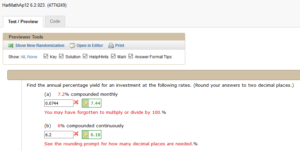
Lastly, you can choose content with confidence knowing that there’s someone to support you should you need it. All the questions in WebAssign are coded by real subject matter experts in our Raleigh, North Carolina office. If you ever find an error in a question, or think a question’s wording is confusing, you can easily report a question error for evaluation and get a quick fix to any confirmed issues. We’re not perfect—but we value accuracy.
It may seem overwhelming to try to address each and every individual need throughout the semester—so start small. You can choose a few top-priority challenges to solve and slowly evolve your course design using these tactics. The result? A Math course built with your students in mind.
For more practical tips and guidance on how to optimize your course with WebAssign, check out our latest recorded training session.

